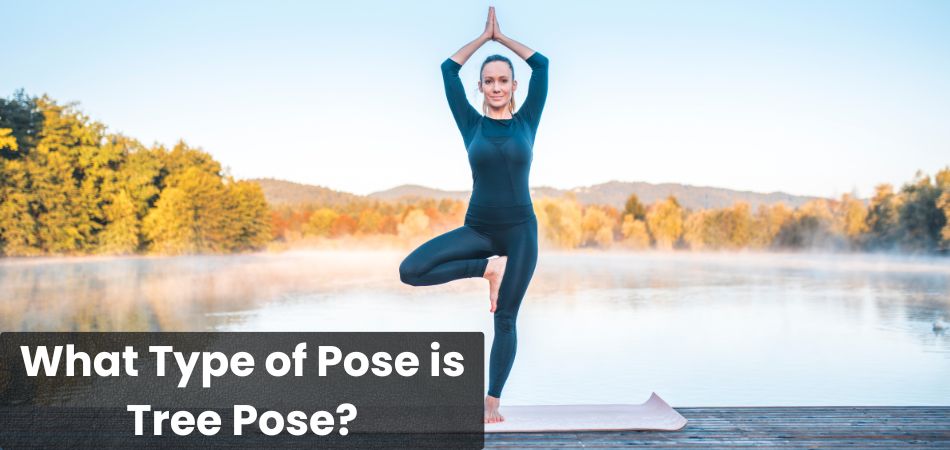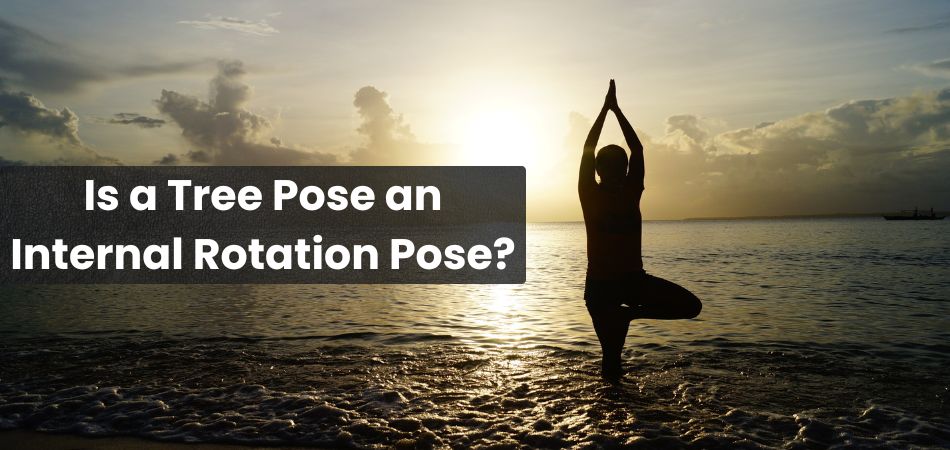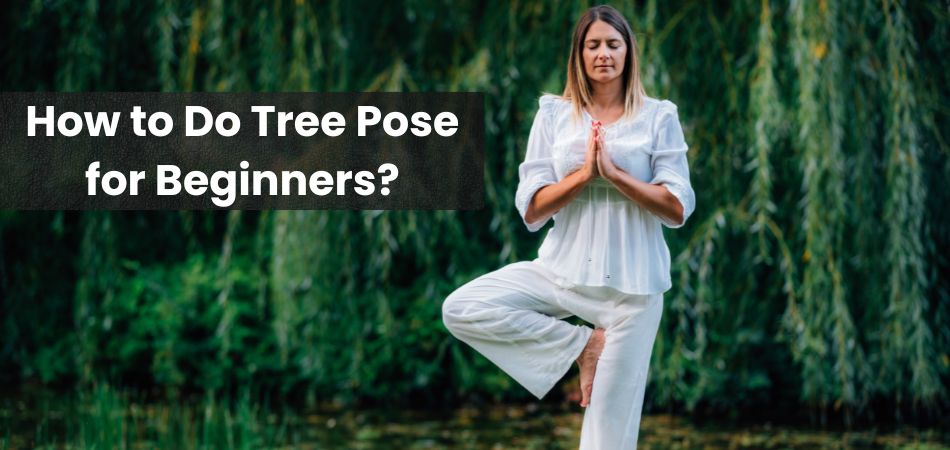When practicing yoga, knowing the alignment of each pose is essential for safety and effectiveness. As you flow through various positions, questions about body mechanics often arise. One such question is: Is a tree pose an internal rotation pose?
Tree pose, or Vrksasana, involves balancing on one leg while placing the other foot against the inner thigh or calf. While this posture primarily emphasizes balance and core strength, it also engages your hip muscles. The supporting leg typically experiences external rotation, while the lifted leg’s hip rotates internally to stabilize and maintain balance.
Curious about how this affects your practice? Keep reading to explore the mechanics of Tree Pose in more detail and how to make the most of it in your yoga journey!
What Type of Pose is Tree Pose?
Tree Pose, or Vrksasana, is a standing balance pose that challenges both your physical stability and mental focus. It requires you to stand on one leg while the other foot is placed against the inner thigh or calf of the standing leg. The arms are typically extended overhead, with palms together, mimicking the shape of a tree reaching towards the sky. The pose enhances balance, concentration, and coordination, making it a valuable addition to any yoga practice.

Physically, Tree Pose involves a combination of alignment and engagement. The standing leg must be firmly grounded with the foot pressing into the mat, activating the muscles of the leg and hip. The lifted leg’s hip rotates, helping to stabilize the body, while the torso and arms are lifted to create length and openness. This pose not only strengthens the legs but also opens the hips and stretches the groin and inner thighs.
Tree Pose is an excellent posture for improving mental focus and cultivating mindfulness. By holding this challenging balance, you practice perseverance and cultivate a sense of calm and poise. It is often used as a foundational pose in yoga sequences, benefiting practitioners of all levels.
Is a Tree Pose an Internal Rotation Pose?
Tree Pose (Vrksasana) involves balancing on one leg while the other foot rests on the inner thigh or calf of the standing leg. Many practitioners wonder, “Is Tree Pose an internal rotation pose?” The answer lies in the movement of the lifted leg’s hip. When you place the foot on the standing leg, your hip naturally rotates internally to stabilize the pose.

In Tree Pose, the hip of the standing leg typically experiences external rotation, which helps ground the foot into the mat. On the other hand, the hip of the lifted leg undergoes internal rotation to keep the pelvis stable and prevent the knee from jutting outward. This internal rotation is essential for maintaining proper alignment and balance.
While Tree Pose does involve internal rotation in the lifted leg, note that the overall focus of the pose is on balance and hip mobility. It will help you improve your practice and prevent strains and injuries if you understand these mechanics.
Role of Internal and External Rotation in Tree Pose
In Tree Pose (Vrksasana), both internal and external rotations play a key role in achieving proper alignment and balance. The external rotation of the standing leg is crucial for grounding the foot into the mat. By externally rotating the hip of the standing leg, you create a solid foundation, activating the muscles of the leg and ensuring stability. This allows you to maintain the balance needed to hold the posture.
Meanwhile, the lifted leg experiences internal rotation, which stabilizes the pelvis and keeps the knee of the lifted leg pointing forward. Internal rotation helps prevent the knee from splaying outward, which could disrupt your balance and misalign your hips. The proper engagement of internal rotation in the lifted leg also helps activate the glutes and strengthens the hip muscles.
Together, the balance between internal and external rotations in Tree Pose promotes a harmonious alignment throughout the body. This acceptance of alignment reflects yoga’s impact on the body, improving both physical stability and mental clarity.
Why is Internal Rotation Important in Tree Pose?
Internal rotation plays a crucial role in maintaining proper alignment and stability in Tree Pose (Vrksasana). This action helps ensure that the lifted leg stays in alignment, preventing strain or injury. The following are reasons why internal rotation is important in tree pose:
Aligning the Hips for Balance
Internal rotation of the lifted leg helps align the hips, ensuring they remain level. This balance is vital for stability, preventing the pelvis from tilting and throwing you off-center. Without internal rotation, the hip may rotate outward, making it harder to stay grounded. Proper alignment aids in achieving the steadiness required to hold the pose.
Protecting the Knee Joint
When internal rotation is engaged in Tree Pose, the knee of the lifted leg stays in line with the hip and foot. This alignment helps protect the knee joint from unnecessary strain. If internal rotation is ignored, the knee may rotate outward, potentially causing discomfort or injury. Maintaining proper rotation ensures that the knee remains stable and safe throughout the pose.
Enhancing Stability in the Pose
Internal rotation in the lifted leg contributes to the overall stability of Tree Pose. It engages the muscles of the inner thigh and the glutes, which provide support and strength. This increased muscle engagement prevents wobbling and helps maintain balance. The pose becomes more secure, allowing for longer holds and deeper concentration.
Preventing Hyperextension of the Standing Leg
The standing leg must be firm and engaged, and internal rotation of the lifted leg helps achieve this. If the hips are misaligned, it may cause the standing leg to hyperextend, leading to discomfort. Internal rotation allows for better control over both legs, avoiding unnecessary strain on the standing leg. This alignment helps in maintaining the strength needed to hold the pose for extended periods.
Improving Overall Hip Flexibility
Internal rotation of the lifted leg in Tree Pose can improve hip flexibility over time. By encouraging proper rotation, this pose stretches and opens the hip flexors, especially in the lifted leg. As you practice, the range of motion in the hips gradually increases. This increased flexibility supports better performance in other poses as well.
Enhancing Mind-Body Connection
Internal rotation in Tree Pose requires conscious effort, which strengthens the mind-body connection. As you focus on engaging this movement, you bring awareness to the alignment and control of your body. This builds up mindfulness in your practice, helping to improve focus and concentration. The mental engagement needed for internal rotation makes Tree Pose a meditative practice.
Building Strength in the Core and Legs
When internal rotation is activated, the muscles in the core and legs are strengthened. The rotation engages the deep stabilizers of the pelvis and spine, providing support for the entire body. This muscle activation not only improves balance but also increases overall strength. Over time, this contributes to more effective and powerful yoga practice.
Why Do Some Practitioners Feel Internal Rotation in Tree Pose?
In Tree Pose (Vrksasana), internal rotation plays a key role in maintaining proper alignment, but not all practitioners feel it in the same way. This variation can be influenced by factors like body type, flexibility, and experience level. Listed below are some reasons why some practitioners feel internal rotation can help adjust the practice for better alignment and stability.
Differences in Hip Anatomy
The structure of a person’s hip joint can affect how they experience internal rotation. Some individuals may have a more flexible or mobile hip joint, which allows them to feel a stronger internal rotation. Others may have tighter hips or a more rigid joint structure, which makes the rotation less noticeable. This anatomical variance can lead to different sensations in the pose.
Tightness in the Hip Flexors
If the hip flexors are tight, they can limit the amount of internal rotation that is felt in Tree Pose. Tight muscles can restrict the movement, preventing full rotation of the hip. As a result, practitioners with tight hip flexors might not experience the full benefit of internal rotation and may feel discomfort or misalignment.
Level of Flexibility
Flexibility in the legs and hips greatly affects the feeling of internal rotation. Those with greater flexibility in their hip abductors and external rotators may feel the internal rotation more easily. In contrast, practitioners with less flexibility might find it harder to engage this rotation, leading to less of a noticeable sensation.
Engagement of the Core Muscles
The level of core engagement can influence how strongly internal rotation is felt. A strong, active core helps stabilize the pelvis and support the internal rotation in the lifted leg. Without sufficient core activation, the body may compensate by allowing the hip to rotate externally, diminishing the internal rotation feeling.
Experience and Awareness in the Pose
More experienced practitioners tend to be more aware of their body’s alignment and internal rotation. They are likely to consciously engage the muscles required to feel internal rotation. Beginners, however, may not have developed the same level of body awareness, which could explain why they feel less internal rotation in Tree Pose.
How to Do Tree Pose for Beginners?
Tree Pose (Vrksasana) is a foundational balancing posture that helps improve strength, stability, and focus. For beginners, it can be challenging to find the right alignment and balance. However, with a few simple steps, you can build a solid foundation and progress in your practice.

1. Start with Proper Foot Placement
Begin by standing tall with your feet hip-width apart. Shift your weight onto one leg, grounding the foot firmly into the floor. Avoid locking your standing knee, keeping it soft but strong, to maintain balance.
2. Find the Right Position for the Other Foot
Bring your other foot up and place it on the inner thigh, calf, or ankle of the standing leg. Avoid placing the foot directly on the knee to prevent strain on the joint. Focus on pressing the foot into the leg and the leg back into the foot for stability.
3. Activate the Core Muscles
Engage your core by gently drawing the belly button towards the spine. This helps stabilize the pelvis and maintain balance. A strong core also protects your lower back during the pose, ensuring a safer practice.
4. Lift Your Arms
Once you feel stable, begin to lift your arms overhead. Bring the palms together in a prayer position or keep them shoulder-width apart, whichever feels most comfortable. Keep your shoulders relaxed and away from your ears as you reach upwards.
5. Focus on a Drishti
To maintain your balance, focus your gaze on a single point, known as a drishti. Choose something stationary, such as a spot on the wall or the floor, to help steady your mind and body. A steady gaze enhances focus and prevents wobbling.
6. Breathe Deeply and Stay Present
Take deep, steady breaths to remain grounded and calm. Inhale to lengthen your spine, and exhale to relax into the pose. If you lose balance, gently come back to your starting position and try again with patience.
7. Use Props for Support
If balancing is difficult, consider using a wall or block for additional support. Place your hand lightly on a wall to steady yourself or a block under your lifted foot for height. As you practice, gradually rely less on props and aim for a balanced pose without assistance.
Frequently Asked Questions (FAQs)
Tree Pose (Vrksasana) is a popular and effective yoga posture that many beginners and seasoned practitioners enjoy. It offers numerous physical benefits, from improving balance to strengthening the core. However, several common questions arise when practicing this pose. Below are some frequently asked questions to help clarify some of the nuances.
1. Can Tree Pose be Modified for Beginners?
Yes, Tree Pose can be easily modified by placing the foot lower on the standing leg, such as at the ankle or calf. You can also use a wall or chair for extra support while balancing. These modifications allow beginners to practice the pose with more stability and confidence.
2. What If I Can’t Keep My Foot on My Thigh?
If you find it difficult to place your foot on your thigh, try placing it lower on the calf or ankle instead. Avoid putting your foot directly on your knee, as this can cause discomfort or injury. Practicing this way still provides the benefits of the pose and allows you to work on balance gradually.
3. How Long Should I Hold Tree Pose?
For beginners, aim to hold Tree Pose for 15 to 30 seconds on each leg. As you gain strength and stability, you can extend the duration of the hold. Listening to your body is key, so only hold the pose as long as you feel comfortable.
4. Is Tree Pose Good for Improving Flexibility?
While Tree Pose primarily strengthens the legs and improves balance, it also helps open the hips and stretches the groin area. Over time, practicing this pose regularly can improve flexibility, particularly in the hips and inner thighs. However, it should be combined with other stretches for a well-rounded flexibility routine.
5. Can Tree Pose Be Done with Shoes On?
It’s best to practice Tree Pose barefoot to ensure proper grounding and connection with the floor. Shoes can interfere with your ability to feel the stability of your standing leg. If you must wear shoes, choose minimalistic footwear with good arch support.
Final Words
Tree Pose (Vrksasana) is a powerful yoga posture that offers numerous benefits, from enhancing balance to strengthening the legs and core. Knowing the mechanics of the pose, such as the role of internal rotation, is crucial for achieving proper alignment and preventing injury.
So, is a Tree Pose an internal rotation pose? Yes, the lifted leg’s hip typically experiences internal rotation to maintain stability, which is essential for balance. By focusing on these details, you can deepen your practice and perform the pose with greater confidence and safety.
